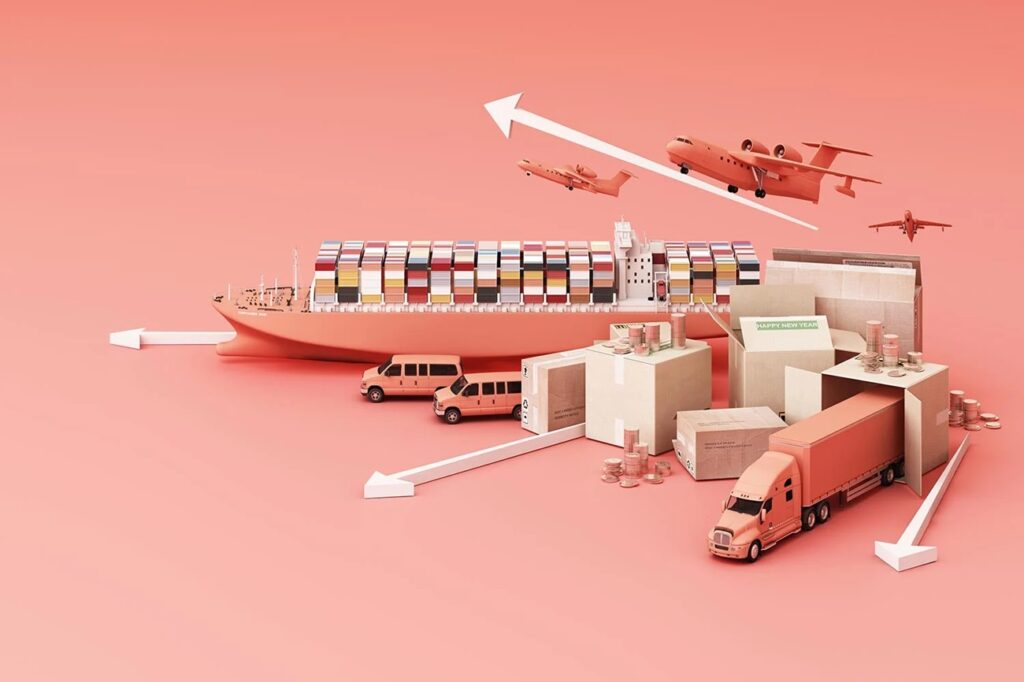In the fast-paced world of logistics, where the movement of goods plays a pivotal role in global commerce, the efficiency of freight management is a critical factor in ensuring smooth operations. From manufacturing plants to distribution centers, the seamless flow of goods relies on effective freight management.
In this comprehensive exploration, we delve into the essence of efficient freight management, the transformative technologies revolutionizing the industry, the significance of real-time tracking and visibility, and strategies for cost-efficient routing and collaborative platforms.
I. The Essence of Efficient Freight Management
A. Defining Key Components for Effective Freight Management
At its core, efficient freight management encompasses a range of interconnected processes designed to optimize the movement of goods from point A to point B. It involves meticulous planning, coordination, and execution to ensure that cargo reaches its destination promptly and cost-effectively. Key components include transportation planning, carrier selection, route optimization, and performance monitoring.
Organizations must adopt end-to-end supply chain management strategies to achieve streamlined freight management. This involves a holistic approach that integrates all supply chain stages, from procurement to distribution. Utilizing supply chain management software is imperative for real-time coordination and data-driven decision-making.
B. Understanding How Efficient Freight Processes Impact Overall Supply Chain Performance
Efficient freight management is not an isolated function but an integral part of the larger supply chain ecosystem. Any disruption in the flow of goods can have cascading effects, impacting production schedules, inventory levels, and customer satisfaction. Therefore, organizations must recognize the symbiotic relationship between freight management and overall supply chain performance.
Implementing robust freight management practices contributes to a responsive and agile supply chain. It minimizes lead times, reduces holding costs, and enhances customer service through timely deliveries. A well-optimized freight management system is the linchpin in achieving the delicate balance between supply and demand.
II. Technologies Revolutionizing Freight Management
A. Overview of Transformative Technologies like IoT and Data Analytics
In recent years, the logistics industry has witnessed a technological revolution that has reshaped the landscape of freight management. The Internet of Things (IoT) and data analytics are two key players in this transformation. These technologies offer unprecedented opportunities for optimizing freight operations.
The IoT allows for real-time monitoring of assets throughout the supply chain. From tracking the location and condition of goods to monitoring the performance of vehicles and equipment, IoT sensors provide a wealth of data that can be leveraged for better decision-making. This real-time visibility enables quick response to disruptions, reducing downtime and enhancing overall efficiency.
Data analytics complements IoT by processing the vast amounts of data generated in the freight management process. Advanced analytics algorithms can uncover insights into historical performance, predict potential issues, and recommend optimal routes and modes of transportation. This data-driven approach is invaluable for making informed decisions that positively impact the bottom line.
B. Their Role in Simplifying and Enhancing Freight Operations
Integrating IoT and data analytics simplifies and enhances freight operations by providing a comprehensive view of the supply chain. When supported by these technologies, freight logistics becomes a well-orchestrated symphony of data-driven decisions. Organizations can optimize routes, predict maintenance needs, and ensure the integrity of sensitive cargo through real-time monitoring.
Supply chain management software, empowered by IoT and data analytics, becomes a centralized hub for information and control. This software facilitates communication and collaboration across the supply chain and allows for the seamless integration of various technologies. The end-to-end supply chain is connected and responsive from order processing to inventory management.
III. Real-Time Tracking and Visibility
A. The Significance of Real-Time Tracking for Heightened Visibility
Real-time tracking is a game-changer in freight management. The ability to monitor shipments’ location, condition, and status in real-time provides unparalleled visibility into the supply chain. This visibility is crucial for addressing challenges promptly and ensuring that goods reach their destination without delays.
Freight tracking software has become a cornerstone of real-time tracking, offering a user-friendly interface for monitoring shipments. This software utilizes GPS and RFID technologies to provide accurate and up-to-the-minute information on the location of goods. With this level of visibility, organizations can proactively address issues such as route deviations, delays, or damage to the cargo.
B. Implementing Tracking Solutions to Streamline Freight Management
Organizations must implement robust tracking solutions to harness the benefits of real-time tracking fully. These freight management solution go beyond simple location tracking and incorporate temperature monitoring, shock detection, and tamper-proofing features. This comprehensive approach ensures not only that the goods are on the right track but also that they are in suitable condition.
Freight software companies increasingly invest in sophisticated tracking solutions to differentiate themselves in the competitive market. Integrating these technologies into their operations allows them to offer their clients a higher level of service, building trust and loyalty. As the demand for real-time visibility continues to grow, tracking solutions will play an even more pivotal role in streamlining freight management.
IV. Cost-Efficient Routing and Collaborative Platforms
A. Strategies for Optimizing Freight Routes and Reducing Costs
One of the critical challenges in freight management is the optimization of routes to minimize costs while ensuring timely deliveries. This involves a strategic approach considering distance, fuel efficiency, and traffic conditions. Freight optimization software is a powerful tool in this endeavor, utilizing algorithms to determine the most efficient routes for different shipments.
Implementing end-to-end supply chain management strategies also involves collaboration with carriers, suppliers, and other stakeholders. By sharing information and working collaboratively, organizations can optimize routes based on real-time data and adjust to changing conditions. This collaborative approach not only reduces costs but also enhances the overall efficiency of the supply chain.
B. The Role of Collaborative Platforms in Fostering Seamless Communication
Collaborative platforms play a pivotal role in streamlining communication and coordination among various players in the freight management process. These platforms provide a centralized space for sharing information, updates, and alerts. By fostering seamless communication, collaborative platforms enable quick responses to changes in the supply chain, reducing the risk of disruptions. Freight management company is increasingly adopting collaborative platforms to enhance their operational efficiency. These platforms facilitate real-time communication between shippers, carriers, and stakeholders, allowing quick decision-making and problem-solving. As a result, the entire supply chain becomes more agile and responsive to dynamic market conditions.








Leave a Comment
You must be logged in to post a comment.